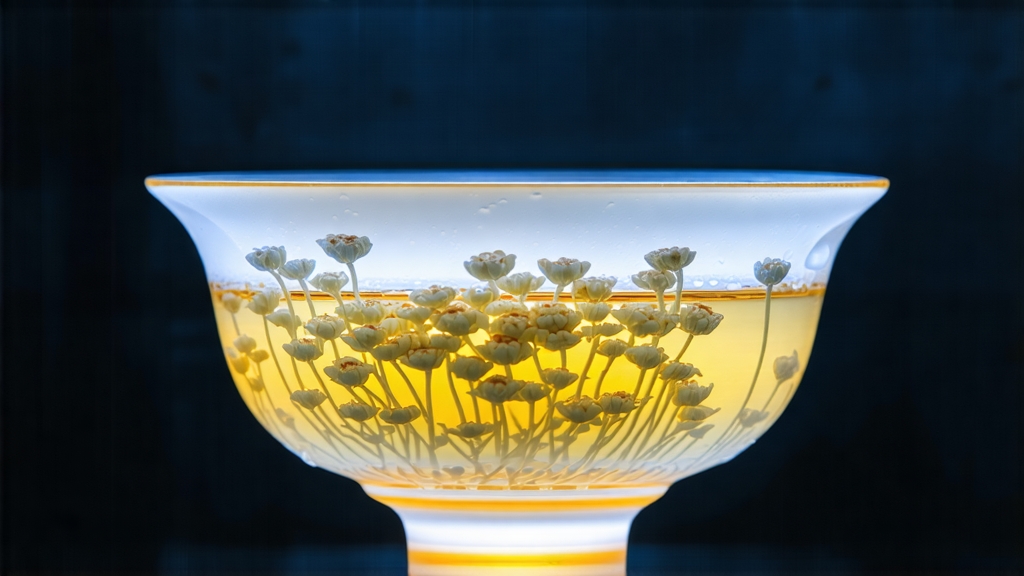
Silver Needle, known in Chinese as Bai Hao Yin Zhen, is the quiet aristocrat of white tea. To the uninitiated it may look like a jar of pale pine needles, yet in the cup it releases the fragrance of a midsummer night after rain: cool, sweet, faintly glowing. Its story begins in the coastal mountains of northeast Fujian, where the Min River bends toward the East China Sea and the white haze of marine humidity drifts inland, kissing the tea gardens with perpetual dew. Here, around the counties of Fuding and Zhenghe, the Da Bai cultivar has thickened its leaf and enriched its down for more than two centuries, waiting for the brief spring moment when only the unopened bud is worthy of becoming Silver Needle.
Historical records first mention “white down tea” during the Song dynasty (960-1279), yet the name Yin Zhen—literally “silver needle”—does not appear until 1796, when a Fuding magistrate presented a small box of pure buds to the Jiaqing Emperor. The gift was so delicately fragrant that court poets compared it to “moonlight solidified,” and the imperial pantry promptly listed it among the eight tribute teas. For the next hundred years Silver Needle remained a bureaucratic luxury, pressed into small cakes and shipped north along the Grand Canal. Only after the opening of Fuding as a treaty port in 1876 did European merchants encounter the loose, down-covered buds; they christened it “Pekoe Tip,” confusing the Chinese term bai hao (white down) with the Indian grading word “pekoe.” By 1890 Silver Needle was appearing in the shop windows of Hamburg and London, priced higher than first-flush Darjeeling and marketed as “the champagne of China.”
Botanically, the tea depends on two local cultivars—Fuding Da Bai and Zhenghe Da Bai—both of which develop extraordinarily plump buds whose dense trichomes act as natural sun-block and aroma traps. In early March, when five consecutive days hold steady at 12-18 °C and humidity lingers above 75 %, the bushes enter what farmers call the “jade dew window.” Picking begins at dawn, always on a clear day, because rain would smear the down and bruise the bud. The standard is ruthless: only the single unopened shoot, 2.5-3 cm long, fat as a matchstick, pear-green under its silver coat. A skilled picker can gather 600 g of fresh buds in an hour; 30 000 of them will shrink to just 500 g of finished tea.
The craft that follows is less manufacture than restraint. Silver Needle is the least handled of all teas: no pan-firing, no rolling, no kneading. The buds are spread on bamboo trays exactly one layer thick, then wheeled into a sunning yard facing southeast. For the next 48 hours they will be caressed by three gentle forces: soft morning light, a continuous mountain breeze, and the cool radiation of night. The goal is to let moisture leave the bud so slowly that oxidative enzymes remain almost intact, creating the palest possible liquor while locking in amino acids that translate as sweetness. If the sun grows too fierce, reed mats are unrolled overhead; if clouds gather, the trays are whisked into a ventilated loft where charcoal fires maintain 28 °C. When the moisture content drops to 8-9 %, the buds are piled for a final three-hour “rest,” allowing internal temperatures to equalize before a last low-temperature bake at 40 °C. The entire cycle respects the Daoist maxim wu wei—action through non-action—letting the leaf reveal itself rather than forcing a style.
Unlike green tea, whose freshness fades within months, Silver Needle is patient. Stored in a lacquered tin away from light and odor, it will deepen in complexity for up to a decade. Young Needle tastes of fresh hay, cucumber skin and lychee; at three years honeyed notes emerge; after seven the liquor turns amber and recalls dried apricot with a trace of sandalwood. Aged Silver Needle is the only white tea that Cantonese tea merchants deliberately cellar, comparing it to a delicate Sauternes that gains texture while never growing heavy.
To brew Silver Needle for western palates, think of it as a white Burgundy: cool, tall glass, long aromatic arc. Begin with mountain spring water whose T